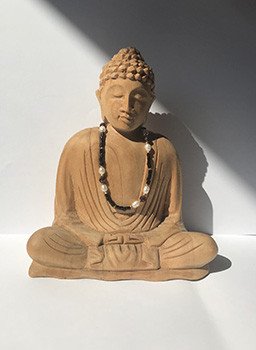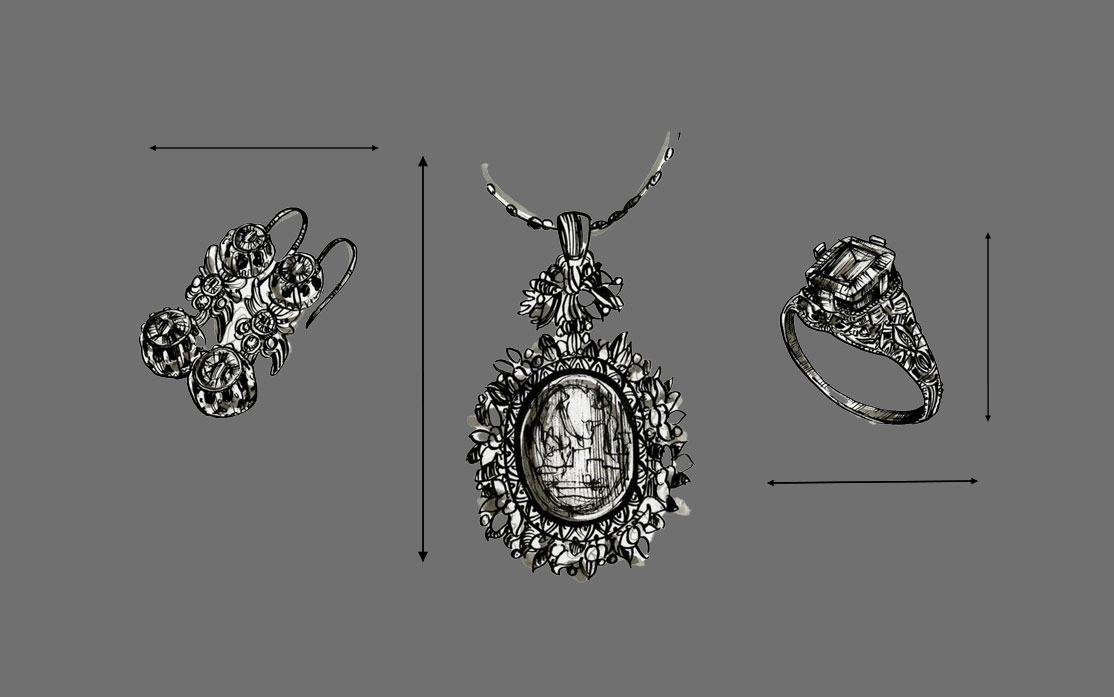Jewels Born on Paper: The Forgotten Craft Behind Great Creations
Discover the fascinating artisanal process that brings iconic jewelry to life. From paper sketches to expert hands in historic European workshops, uncover the story and soul behind each unique piece.
Jewels Born on Paper: The Forgotten Craft Behind Great Creations
Before shining around someone's neck, a jewel must be born. And curiously, its first home is rarely metal or stone: it is paper.
In times dominated by mass production, it is easy to forget that every iconic jewel — from Cartier creations to artisanal pieces found on Riera Baixa street in Barcelona, or at the Porta Portese market in Rome — began with a stroke. A hand-drawn sketch. An idea whispered in graphite.
Sketches and history: where the soul of the jewel is revealed
Jewelry sketches — like those you can see in the image — reveal an unseen universe beyond the display cases. Every curve, floral detail, and proportion was meticulously thought out before existing.
In Bilbao, for example, the tradition of artisanal jewelry is closely tied to Basque culture, where families of goldsmiths have passed down knowledge for generations, mixing classic techniques with a modern pulse inspired by the city's industrial strength. There, in modest stone and wood workshops, pieces have been designed as true wearable sculptures, always with profound respect for material and form.
In Florence, birthplace of the Renaissance, jewelry art rises to a sublime form of expression. Historic workshops like those of the Castellani family or the artisans of Ponte Vecchio have been the perfect setting for the fusion of meticulous drawing and goldsmithing. Designers there are not only artisans but also historians and artists who see each stroke as a direct connection to centuries of artistic legacy.
Nice, located on the French Riviera, is another example where jewelry design reflects a fusion of haute couture and local art. During the 20th century, the city attracted designers and artists who combined paper sketches with experimentation in new materials, creating pieces that today are part of contemporary jewelry history.
For those seeking unique, meaningful jewelry full of personality, understanding this creative process is like unveiling a secret: the jewel begins before it shines, in the silence of paper and the whisper of graphite.
The return to handmade
Today, this craft not only honors the patience of the stroke but also the complexity of a discipline taught in specialized schools. There, students learn to combine technical and artistic drawing, rigorous material selection —from gold and silver to unconventional gems— and traditional manufacturing processes like chasing, setting, and casting.
Historically, jewelry design and manufacturing developed in workshops ranging from small family-run factories to world-renowned houses. In small workshops, the central figures were master goldsmiths who combined creativity and manual skill, often working side by side with apprentices who absorbed every detail as if it were a secret language. In contrast, major jewelry houses like Cartier or Bulgari relied on multidisciplinary teams where designers, technical draftsmen, gemologists, and artisans collaborated to bring iconic collections to life, always starting from the initial sketch.
This duality reflects the soul of jewelry: the combination of tradition and modernity, individual art and collective work, inspiration and technique.




Comments
Leave your comment